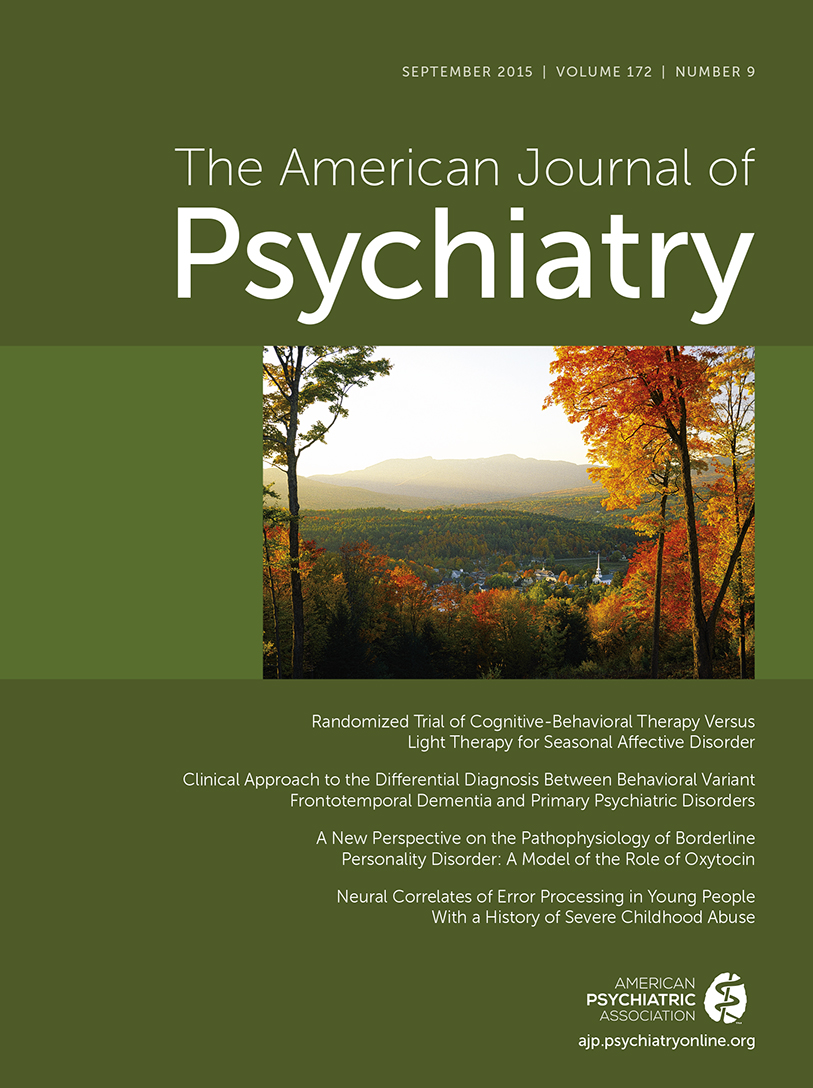In this issue, Correll and colleagues (
1) present results from a 6-week placebo-controlled trial comparing three doses of a new antipsychotic, brexpiprazole, in schizophrenia patients experiencing an acute exacerbation. They found that all three doses were well tolerated and that daily doses of 2 mg and 4 mg, but not 0.5 mg, were effective. This study provides a comprehensive picture of short-term efficacy and tolerability in relation to placebo, but in the absence of an active comparator it is difficult to predict whether brexpiprazole has meaningful advantages or disadvantages compared with existing agents. Brexpiprazole arrives at a time when many of the existing second-generation agents, including aripiprazole, have become generic—this shift toward generic agents has had a significant impact on current and projected health care budgets (
2).
Brexpiprazole, like aripiprazole, is a partial agonist at dopamine D
2 receptors. By activating D
2 receptors to a lesser degree than endogenous dopamine, partial agonists lower the ceiling for maximal D
2 transmission while increasing activity at hypoactive D
2 receptors. The intent is to achieve a balance such that D
2 receptors are activated sufficiently to prevent neurologic side effects (extrapyramidal symptoms) and hyperprolactinemia while avoiding excessive D
2 activity, which would compromise antipsychotic efficacy and might produce side effects associated with D
2 agonism. An earlier unsuccessful D
2 partial agonist, bifeprunox, had greater intrinsic activity at D
2 receptors than aripiprazole and was less effective than existing antipsychotics while producing nausea and vomiting attributable to D
2 receptor activation (
3). It might be expected that aripiprazole, as a partial agonist, also would be less effective than other antipsychotics that are D
2 antagonists; however, the limited available data from head-to-head comparisons suggests that aripiprazole resides in the middle of the pack of second-generation antipsychotics in terms of efficacy (
4). Aripiprazole is essentially free of hyperprolactinemia and extrapyramidal symptoms, but nausea, insomnia, and restlessness, which may be symptoms of D
2 agonism, can complicate early treatment in some patients.
The relative intrinsic D
2 activity of brexpiprazole was 43% compared with 61% for aripiprazole, 84% for bifeprunox, and 100% for dopamine as determined by the maximum inhibitory effect on forksolin-induced cAMP in human D
2-expressing cells (
5). This level of D
2 activity places brexpiprazole between aripiprazole and D
2 antagonist antipsychotics. All else being equal, one would predict that brexpiprazole would possess an intermediate level of efficacy and risk for extrapyramidal symptoms and prolactin elevation. However, unlike aripiprazole, brexpiprazole also has a high affinity for serotonin 5-HT
1a receptors, where it is a partial agonist, and for 5-HT
2a and alpha 1b and 2c adrenoceptors, where it is a potent antagonist (
5). This profile makes brexpiprazole more similar to other second-generation antipsychotics than is aripiprazole and might reduce risk for extrapyramidal symptoms and improve efficacy, although this remains to be established.
The efficacy of 2- and 4-mg/day dosages of brexpiprazole in this study was robust despite a relatively large placebo response and included improvements in positive and negative symptoms and global outcome measures. However, in a similar 6-week placebo-controlled trial of brexpiprazole (the BEACON trial), only the 4-mg/day dose, and not the 2-mg/day dose, separated from placebo (
6). Side effects were similar in both studies, with the 4-mg dose associated with moderate weight gain of approximately 1 kg over 6 weeks and small increases in prolactin concentrations. Akathisia occurred in 7.2% of subjects treated with 4 mg/day of brexpiprazole versus 2.2% of those receiving placebo in the study reported by Correll and colleagues (
1), whereas rates did not differ between brexpiprazole and placebo in the BEACON trial (
6). Rates of other forms of neurologic side effects were similar to those for placebo in both studies, and no effect on cardiac conduction was detected. Brexpiprazole was not associated with blood pressure change, although the 8-day up-titration dosing schedule may have obscured such an effect. It is difficult to estimate from these data how brexpiprazole will compare with other available agents, particularly since the incidence of extrapyramidal symptoms and degree of weight gain or prolactin elevation are influenced by the subject sample and by persistent effects of previous medications.
In summary, as we learned from the CATIE study (
7), we will not know with any certainty how a new antipsychotic compares with other agents currently on the market until more comparative data are available, ideally from head-to-head randomized trials. This information is important not only to justify the higher cost compared with generic agents but also to guide shared decision making. It is an appealing notion that a clinician could select from a collection of D
2 partial agonists with a range of intrinsic activities the agent most suitable for an individual patient on the basis of sensitivity to side effects and efficacy requirements. Is a patient likely to experience a Goldilocks response and find brexpiprazole to be “just right” after disappointing experiences with aripiprazole and D
2 antagonists? Possibly, but it’s not clear that the space that brexpiprazole occupies between aripiprazole and D
2 antagonist antipsychotics is wide enough to be clinically relevant; whether brexpiprazole will differentiate itself from other agents in head-to-head comparisons or in clinical practice remains to be seen.

